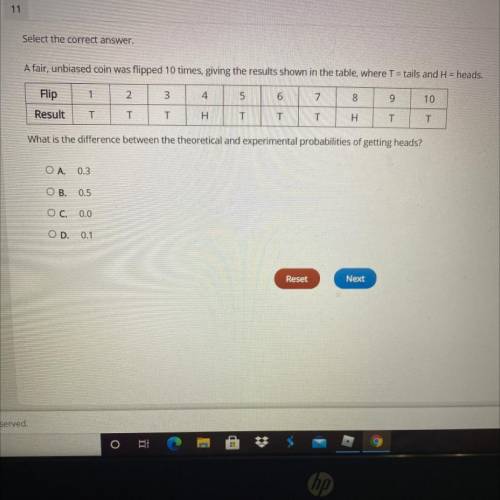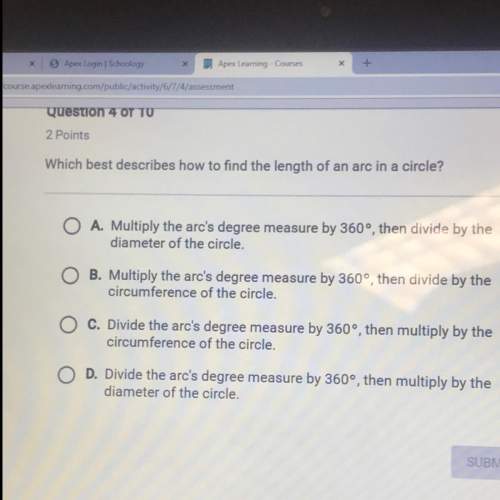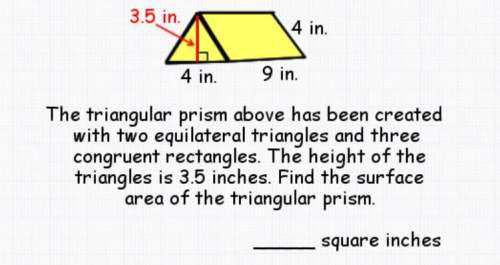
Mathematics, 05.05.2021 22:20 jhony42
A fair, unbiased coin was flipped 10 times, giving the results shown in the table, where T = tails and H = heads.
Flip
1
2
3
4
5
6
7
8
9
10
Result
T
T
T
H
T
T
T
H
T
T
What is the difference between the theoretical and experimental probabilities of getting heads?
OA. 0.3
OB. 0.5
OC. 0.0
OD. 0.1
No


Answers: 3


Other questions on the subject: Mathematics

Mathematics, 21.06.2019 13:50, hannahsambrano12
Examine the following sets of events. set a: {1, 5, 7, 9, 14} set b: {2, 5, 6, 8, 14, 17} which of the following represents the intersection of set a and set b ? {∅} {5, 14} {1, 2, 5, 6, 7, 8, 9, 14, 17} {1, 2, 6, 7, 8, 9, 17}
Answers: 2


Mathematics, 21.06.2019 17:00, iamaguest
Idont understand math at all! : o( use this scenario to answer the remaining questions: brenton purchased a new bedroom set for $4,500.00. he lives in arizona and pays a 8.75% sales tax. if he made a 50% down payment and financed the rest, what amount did he finance? what is the total sales tax brenton will pay? enter your answer in currency format, round to the nearest cent. what was brenton's total amount financed? enter your answer in currency format, round to the nearest cent.
Answers: 3
You know the right answer?
A fair, unbiased coin was flipped 10 times, giving the results shown in the table, where T = tails a...
Questions in other subjects:


Biology, 11.11.2020 14:00

History, 11.11.2020 14:00




Biology, 11.11.2020 14:00

History, 11.11.2020 14:00

Spanish, 11.11.2020 14:00





